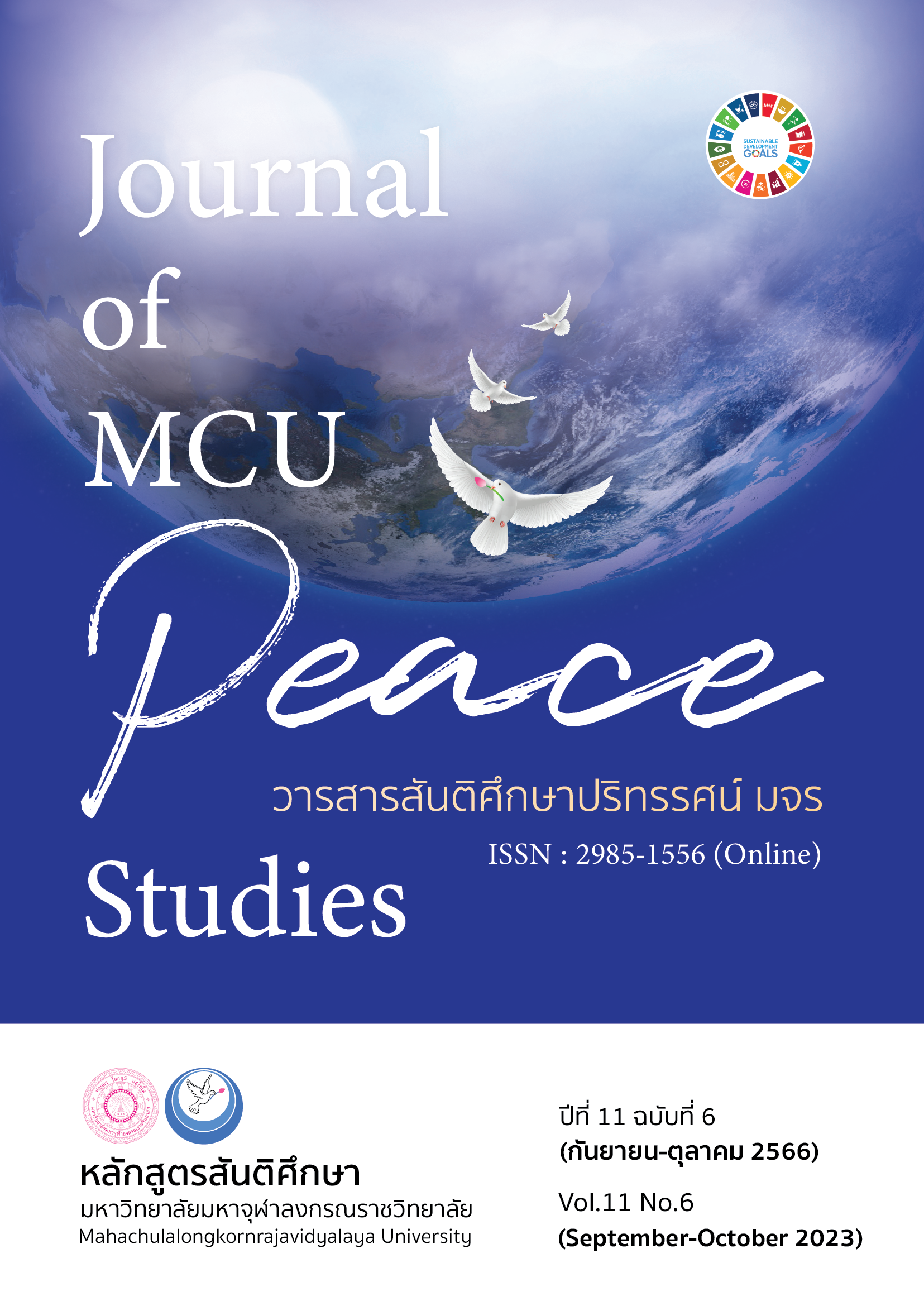Career Counseling Guidelines for High School Students
Main Article Content
Abstract
Effective career counseling considers the appropriate occupation and the learner’s current wellness. Trait-and-Factor to Person-Environment Fit Counseling is a process by which learner can choose a career that is suitable for their learners. It also assesses the learners’ wellness, this process consists of 7 steps as follows: 1) Intake interview, to build a relationship and collect general information 2) Identify developmental variables, to identify learners' perceptions of internal and external variables 3) Assessment, to evaluate the abilities, values and interests of the learners. 4) Identify and Solve problems, to analyze the data from the previous three steps. 5) Generate person-environment-fit analysis, to predict the direction, satisfaction and clear needs of learners 6) Confirm, explore, and decide, to verify the results of the analysis of all results. and 7) Follow-up, to monitor the progress of the counseling process. The counselor able to apply technology and develop flexible skills for learners to be able to adapt to different environments.
Article Details

This work is licensed under a Creative Commons Attribution-NonCommercial-NoDerivatives 4.0 International License.
Views and opinions expressed in the articles published by The Journal of MCU Peace Studies, are of responsibility by such authors but not the editors and do not necessarily reflect those of the editors.
References
Abbasi, S., Ayoob, T., Malik, A., & Memon, S. I. (2020). Perceptions of Students Regarding E-learning During Covid-19 at a Private Medical College. Retrieved July 5, 2022, from https://doi.org/10.12669/pjms.36.COVID19-S4.2766
AdmissionPremium. (2018). More than 60% of High School Students Nationwide Who Are about to Enter the University Fence. I Do Not Know What to Study. Retrieved June 20, 2022, from https://www.admissionpremium.com/content/3296
Bellanca, J., & Ronald, S. (2010). 21st Century Skills: Rethinking How Students Learn. Indiana: Solution Tree.
Boonsathirakul, J. (2021a). Life Career Development. Bangkok: Faculty of Education, Kasetsart University.
Boonsathirakul, J. (2021b). Crisis and Stress Coping of Senior High School Students. Academic Journal of Education, 22(2), 204-219.
Boonsathirakul, J. (2021c). Career Preparation for Students in the 21st Century. Kasetsart Educational Review, 36(2), 1-11.
Chang, C. (1998). Disposition Optimism and Primary and Secondary Appraisal of a Stressor: Controlling for Confounding Influences and Relation to Coping and Psychological and Physical Adjustment. Journal of Personality and Social Psychology, 74(1), 1109-1120.
Crites, J. (1974). Major Contribution Career Counseling: A Review of Major Approaches. The Counseling Psychologist, 4(3), 3-32.
Dawis, V. (1996). The Theory of Work Adjustment and Person-Environment Correspondence Counseling. California: Jossey-Bass.
Del Valle, J., Werner, C., & Rodriguez, D. (2002). Adolescent Career Development: Classroom, Group, and Individual Guidance Activities. California: Books/Cole.
Denning, S. (2016). Christensen Update Disruption Theory. Strategy & Leadership, 44(2), 10-16.
Frydenbery, E. (1997). Interrelationships between Coping, School Connectedness and Wellbeing. Australian Journal of Education, 53(3), 261-276.
Gottfredson, L. S. (1981). Circumscription and Compromise: A Developmental Theory of Occupational Aspirations. Journal of Counseling Psychology, 28(6), 545–579.
International Federation of Robotics. (2017). Executive Summary World Robotics 2017 Industrial Robots, Working Paper of International Federation of Robotics. Retrieved June 28, 2022, from https://ifr.org/downloads/press/Executive_Summary_WR_2017_Industrial_Robots.pdf
Koomsiri , P., Jankaew , S., & Kongpon . T. (2020). A Case Study of Determinants of Using Mental Health Helpline 1323 in Crisis and Effective Practice of the Counselor. Journal of Mental Health of Thailand, 28(2), 99-110.
Orgiles, M. et al. (2021). Coping Behaviors and Psychological Disturbances in Youth Affected by the COVID-19 Health Crisis, Frontiers in Psychology. Retrieved July 7, 2022, from https://doi.org/10.3389/fpsyg.2021.565657
Payne, K. (2017). The Broken Ladder: How Inequality Affects the Way We Think, Live, and Die. New York: Viking.
Ringwald, A. (2015). 3 Ways to Fix Our Broken Training System. Retrieved July 1, 2022, from https://www.weforum.org/agenda/2015/01/three-ways-to-fix-our-broken-training-system
Rounds, B., & Tracey, J. (1990). From Trait and Factor to Person-environment Fit Counseling: Theory and process. New Jersey: Erlbaum.
Rudolph, C., Lavigne, K., & Zacher, H. (2016). Career Adaptability: A Meta-analysis of Relationships with Measures of Adaptivity, Adapting Responses, and Adaptation Results. Journal of Vocational Behavior, 98(1), 1-49.
Savickas, L., & Porfeli, J. (2012). Career Adapt-abilities Scale: Construction, Reliability, and Measurement Equivalence Across 13 Countries. Journal of Vocational Behavior, 80(3), 661-673.
Schiersmann, C., Ertelt, B. J., Katsarov, J., Mulvey, R., Reid, H., & Weber, P. (2012). Nice Handbook for the Academic Training of Career Guidance and Counselling Professionals. Heidelberg: Heidelberg University.
Schulte-Körne, G. (2016). Mental Health Problems in a School Setting in Children and Adolescents. Dtsch Arztebl Int, 113(11), 183–190.
Schwab, K. (2016). The Fourth Industrial Revolution: What it Means, How to Respond. Retrieved June 30, 2022, from https://www.weforum.org/agenda/2016/01/the-fourth-industrial-revolution-what-it-means-and-how-to-respond
Schwartz, K. et al. (2021). COVID-19 and Student Well-Being: Stress and Mental Health During Return-to-School. Canadian Journal of School Psychology, 36(2), 166-185.
Sunarto, D. (2015). Improving Students Soft Skills Using Thinking Process Profile Based on Personality Types. International Journal of Evaluation and Research in Education, 4(3), 118-129.
Swanson, L. (1992). Vocational Behavior: Life-span Career Development and Reciprocal Interaction of Work and Nonwork. Journal of Vocational Behavior, 41(1), 101-161.
Szczepura, A., Nomura, T., & Wild, D. (2020). The Future of Robots in a Super-aged Society. Annals of Robotics and Automation, 4(1), 18-21.
Walsh, B. (1990). A Summary and Integration of Career Counseling Approaches. New Jersey: Erlbaum.
Wongpiromsarn, Y. (2020). Mental Health and the COVID-19 Crisis in Thailand. Journal of Mental Health of Thailand, 28(4), 280-291.
World Economic Forum. (2020). The Future of Jobs Report 2020. Retrieved June 23, 2022, from http://www3.weforum.org/docs/WEF_Future_of_Jobs_2020.pdf

